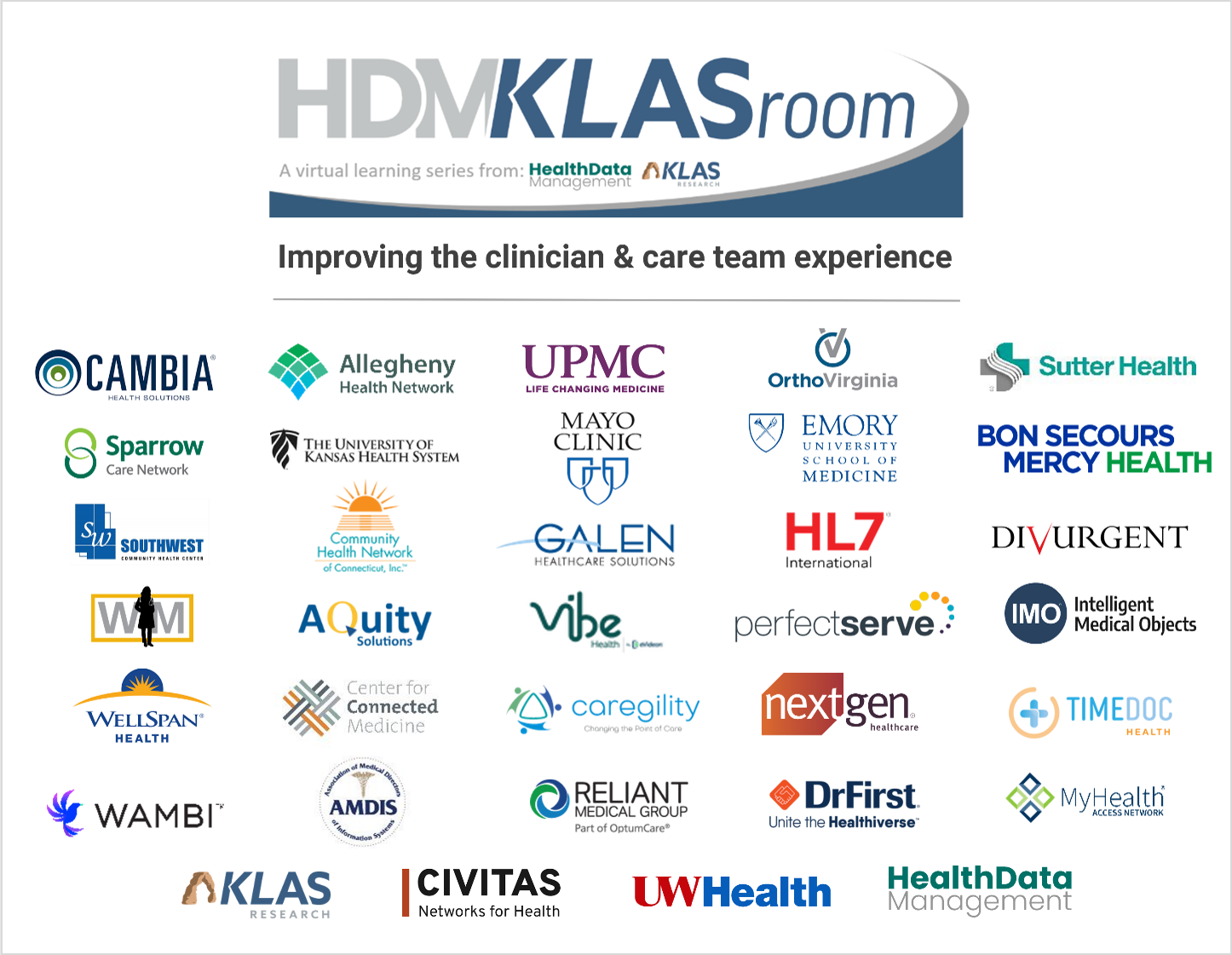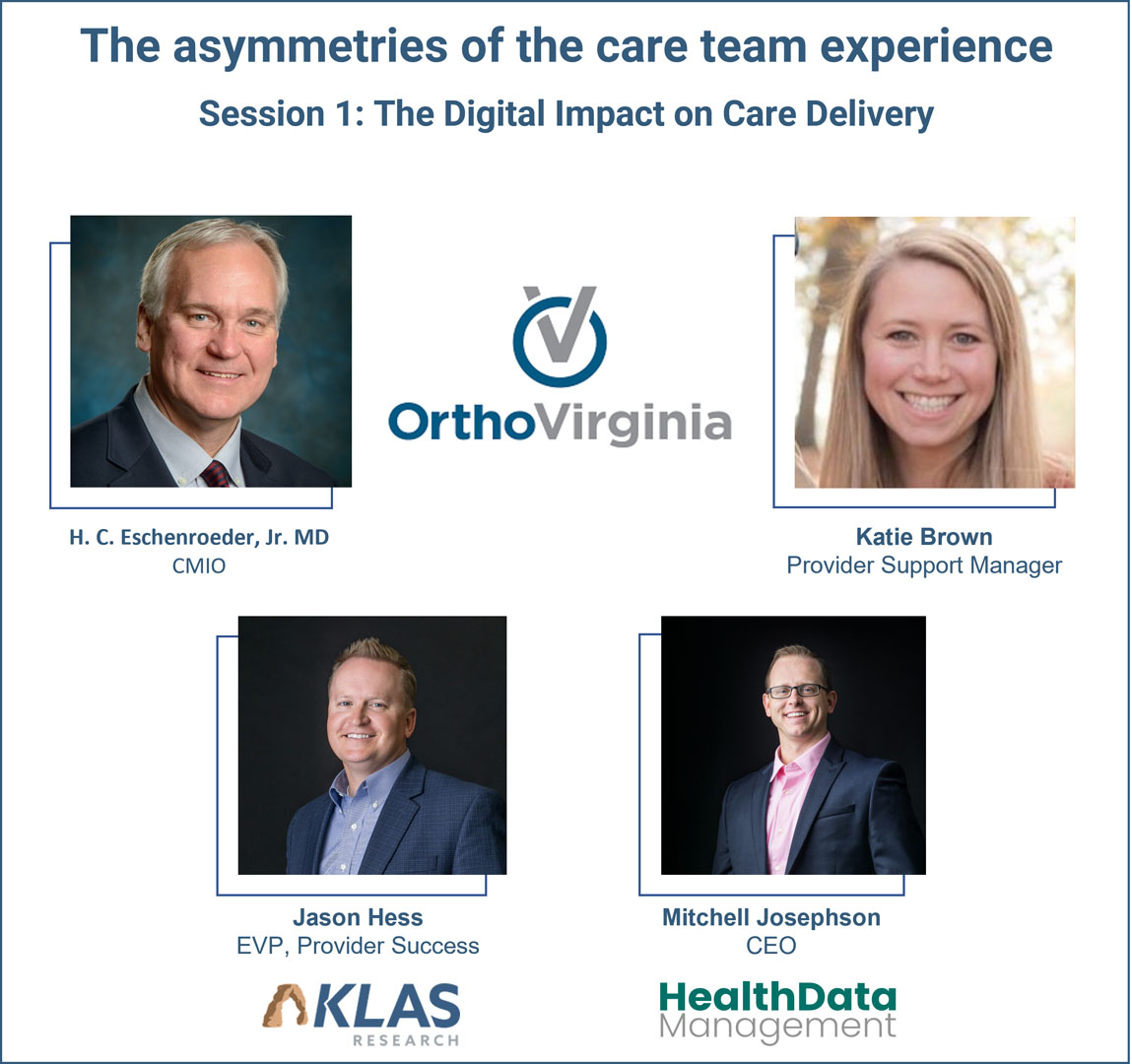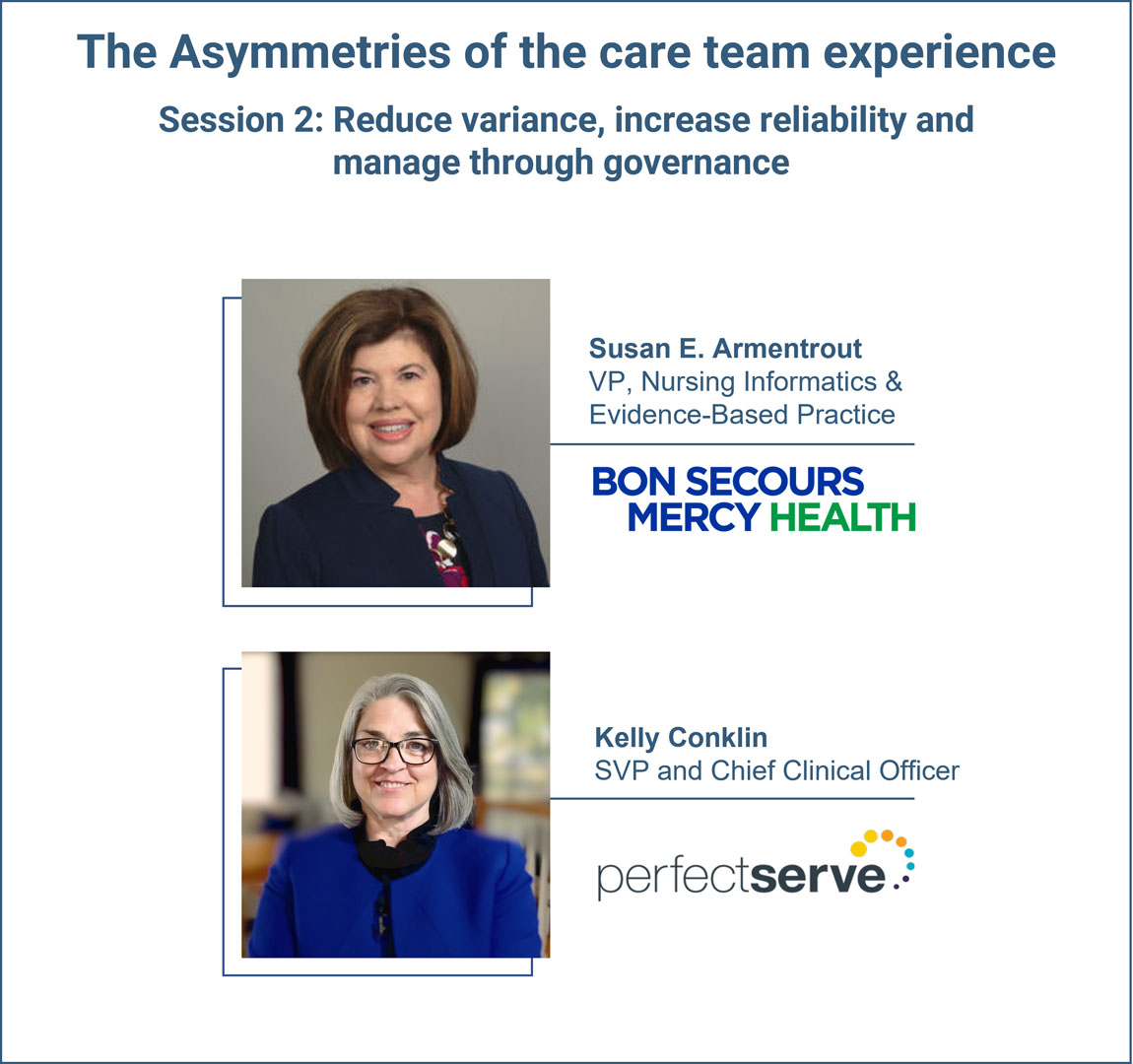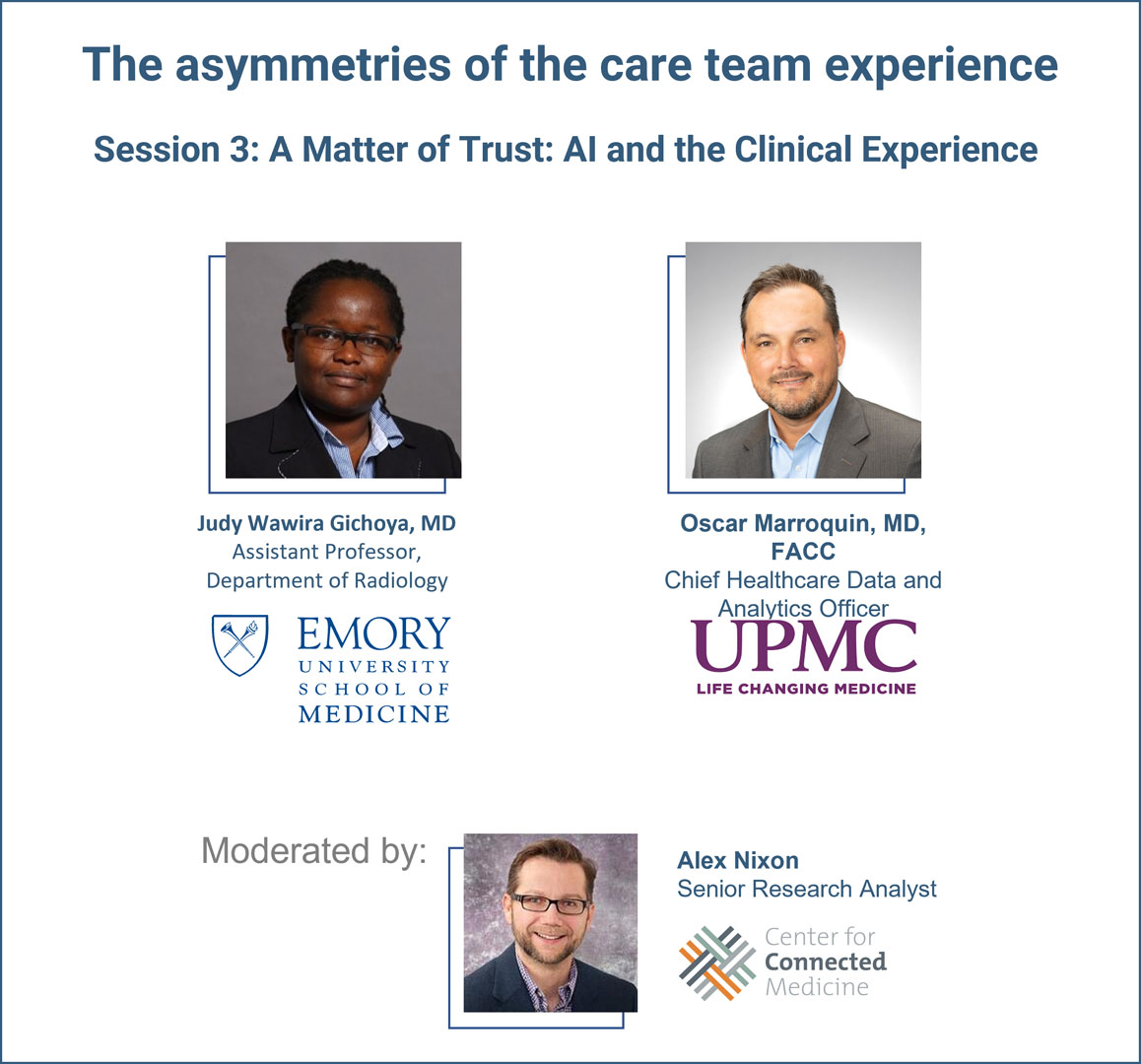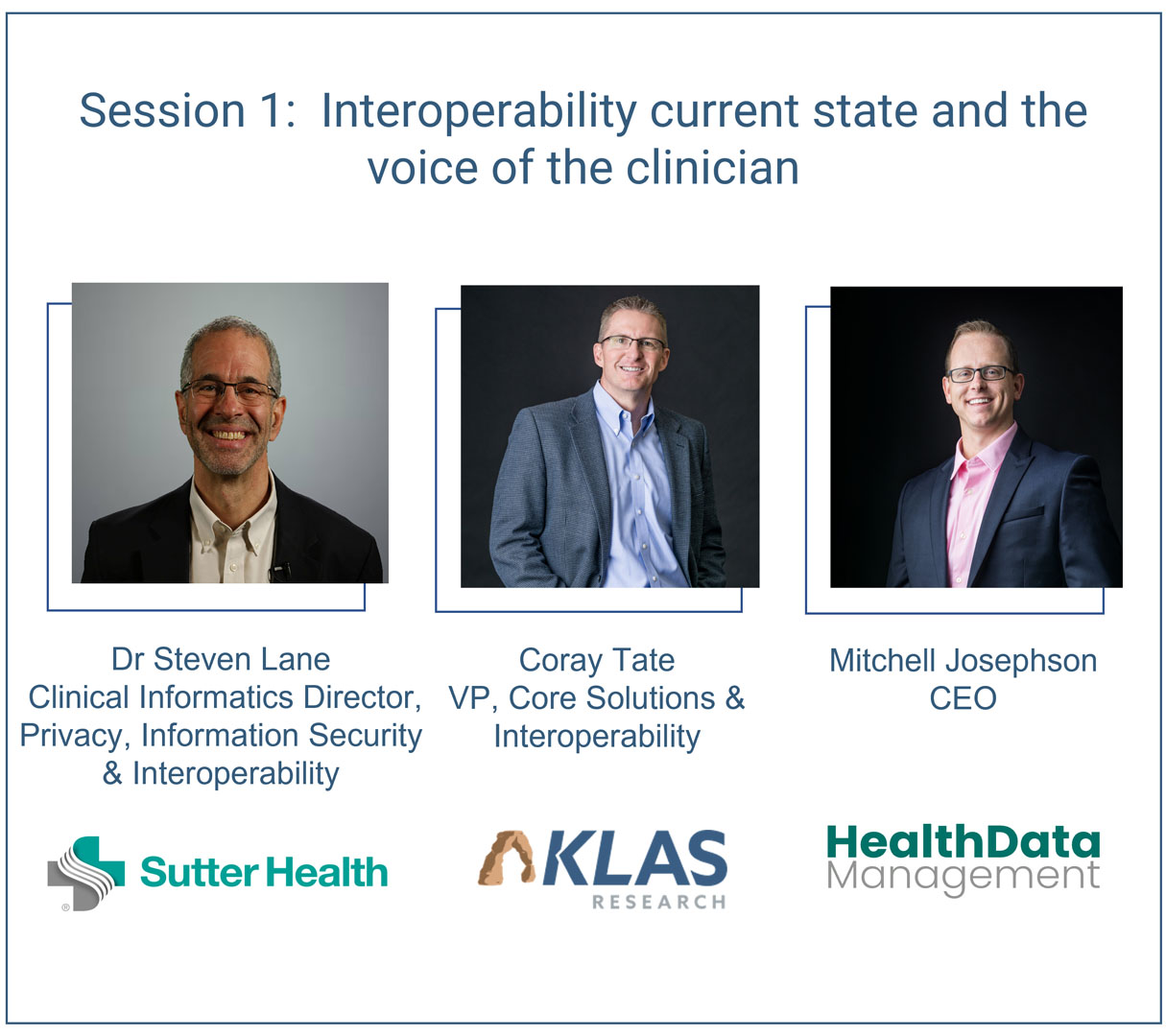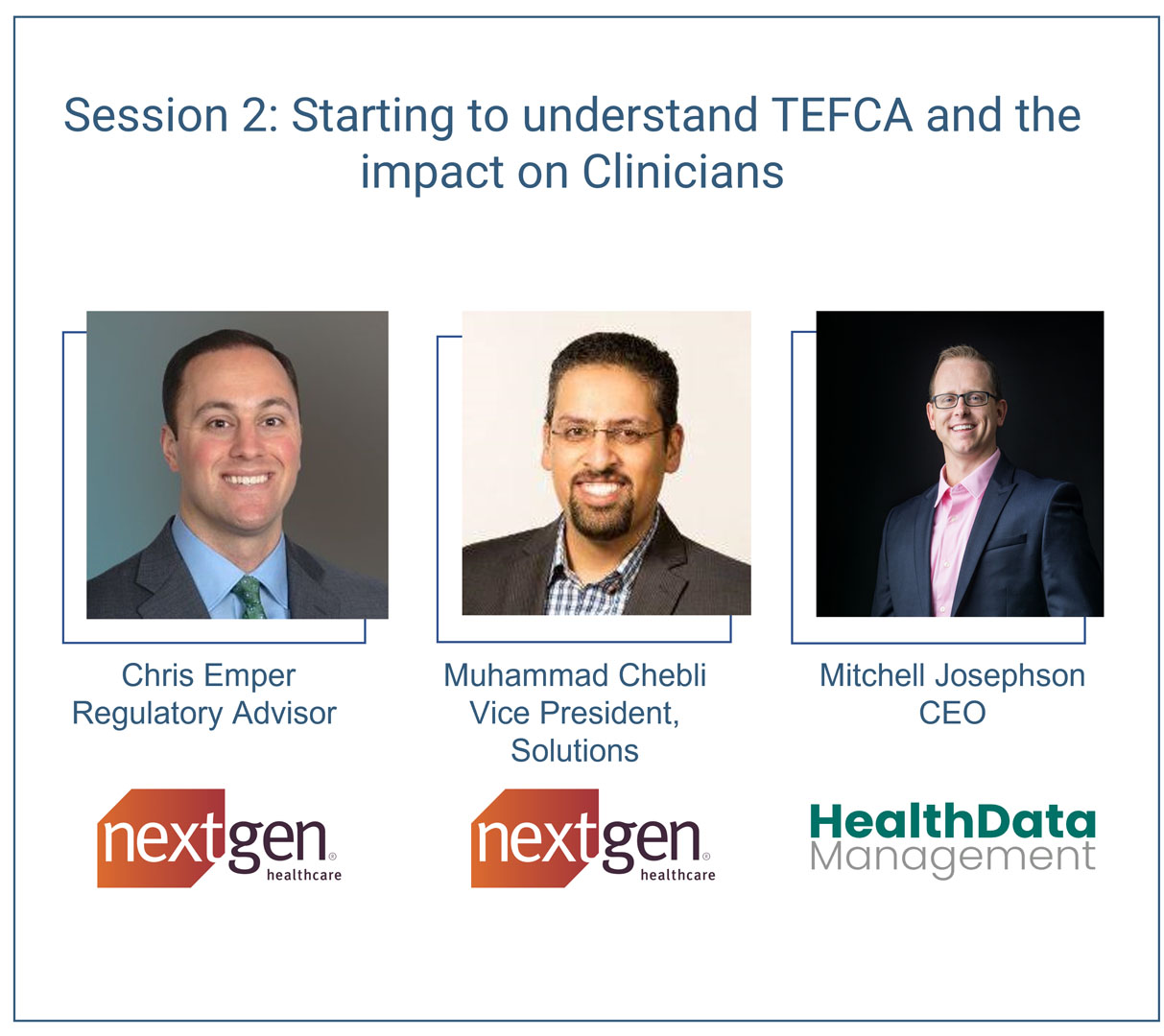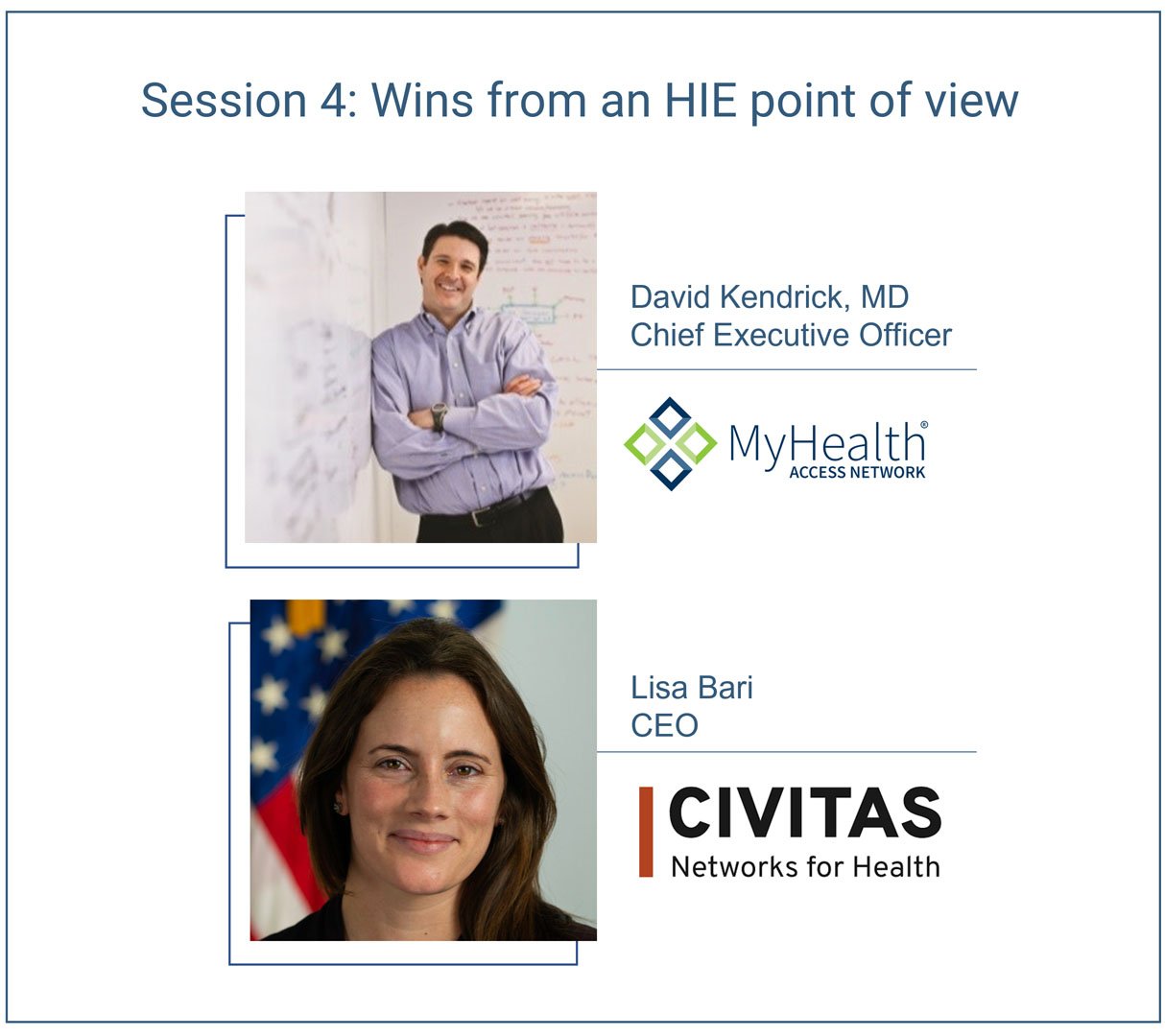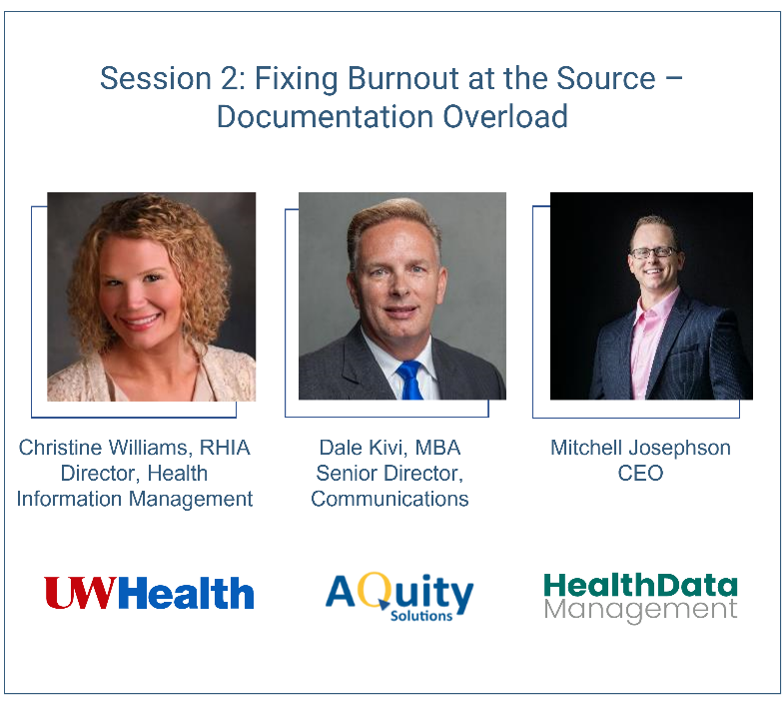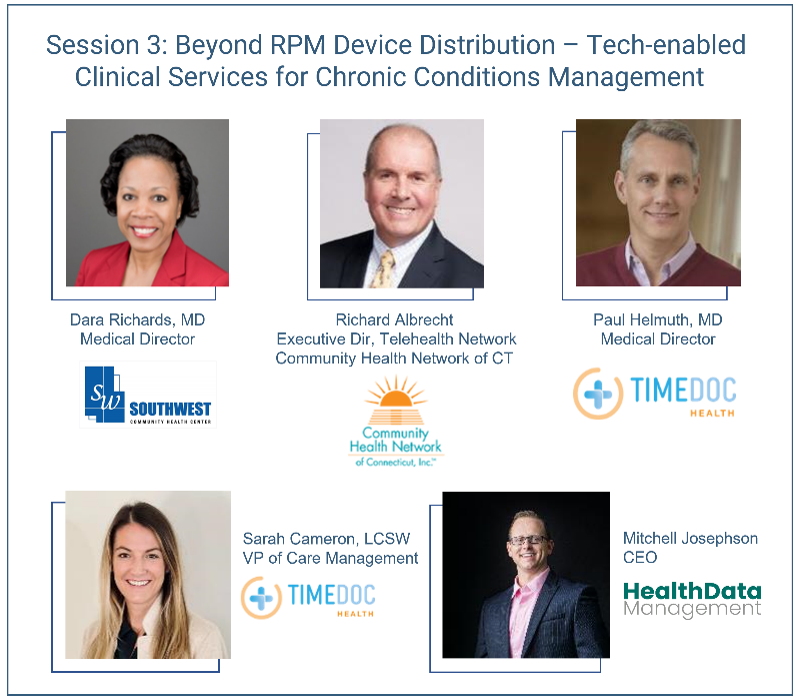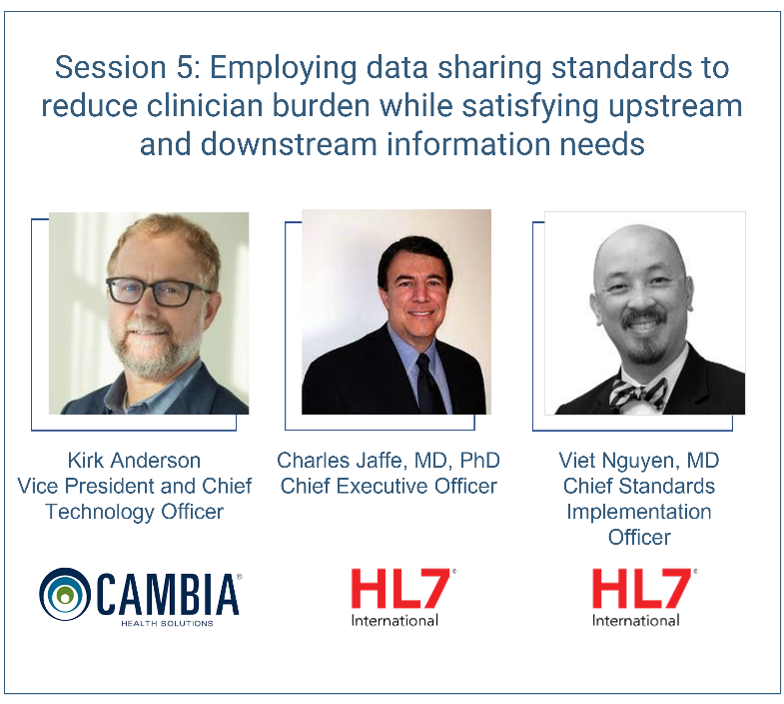Episode 1: The Asymmetries in care team experiences
The digital impact on care delivery
In this session learn what it takes to create support systems and trust between care teams, the organization, and the technologies deployed to deliver better care in an ever-evolving healthcare and technology landscape.
Reduce variance, increase reliability and manage through governance
This session highlights 4 critical principles of success when trying to reduce the number of tools and deploy software to improve clinicians’ communication experiences.
A matter of trust: AI and the clinical experience
The technology is often heralded for its potential to improve patient care, reduce the administrative burden on physicians, and bring greater efficiencies to hospital operations.
Addressing clinical inequity to improve equity for all
Our educators will explore what it means to create and sustain an equitable technological environment for clinical care teams. We’ll share guiding principles and success factors that leading organizations employ.
You have access to data, what does it mean?
This session features a physician informaticist and a senior tech leader discussing data quality, semantics, and taxonomy in the current clinician and care team experience state. They will share usable and accessible tools that will help your organization achieve small wins over time that turn into big wins and better clinical experiences.
Generously Supported By:
.png?width=200&name=MicrosoftTeams-image%20(30).png)
Episode 2: Data: start with the end in mind – the clinician/patient relationship
Interoperability current state and the voice of the clinician
Today this complex activity defined at interoperability can leave out one of the most important voices, the clinicians’. Join Dr Steven Lane from Sutter Health and Coray Tate from KLAS Research as they discuss the current state of interoperability and share principles of success that can help bring the voice of the clinician into crucial interop decisions.
Starting to understand TEFCA and the impact on Clinicians
So much of the work around interoperability will have a downstream effect on clinicians. In this episode we will discuss the current state of the Trusted Exchange Framework and Common Agreement (TEFCA) and what it likely means for national networks, providers, technology vendors, and entities seeking to be designated as Qualified Health Information Networks (QHINs).
The Impact of Healthcare Delivery M&A on the Clinician Experience: EHR Conversion Data Governance
This panel will explore topics including clinical data conversion mapping techniques, converted data reconciliation and impact on workflows, and the dependencies to ensure clinical decision support capabilities are maintained as part of EHR conversion.
Wins from an HIE point of view
Join Lisa Bari, CEO of Civitas Networks for Health and David Kendrick, MD, MPH, CEO of MyHealth Access Network as they discuss how a national network of HIEs are helping clinicians to cross state and political lines to capture real time information to drive a Patient Centered Data Home (PCDH).
Generously Supported By:

Episode 3 – Data where I need it, when I need it
Think of clinician experience like renovating a house - moving from spackling the holes to reinforcing the foundation
Dawn Walters from the University of Kansas Health System and Jason Hess from KLAS Research discuss the strategies the health system is making in creating a sure foundation, and research and guiding principles that are making it possible.
Fixing Burnout at the Source - Documentation Overload
This session offers best-practice details for how Virtual Scribes can be leveraged within a multi-disciplined clinical documentation workflow to measurably reduce burnout, improve patient satisfaction, and increase captured encounter details to positively influence justifiable billings.
Beyond RPM Device Distribution - Tech-enabled Clinical Services for Chronic Conditions Management
Our discussion focuses on how remote monitoring technology is necessary, but not sufficient for success in population health management. Rather, the delivery of technology-enabled clinical services holds great potential for improving clinical quality and improving care team efficiency.
Leveraging artificial intelligence upstream to positively impact the clinician experience downstream
Join Dr. Rob Lackey, and Chip Gerhart as they share how Wellspan faced their hurdles by leveraging artificial intelligence to streamline medication data reconciliation and drive trust amongst clinicians.
Employing data sharing standards to reduce clinician burden while satisfying upstream and downstream information needs
Chuck Jaffe and Viet Nguyen from HL7, and Kirk Anderson from Cambia Health Solutions discuss the work being done behind the scenes to help mitigate these burdens so clinicians can better focus on their patients.
Episode 4: Reimagining the Clinician Experience
The future state of the clinician experience - AI and the promise for tomorrow
Dr John Halamka from the Mayo Clinic, Jennifer Hickenlooper from KLAS Research, and Christer Johnson from HealthFirst discuss the current state of AI, current use cases, and steps we can take to ensure AI algorithms and models are properly used, monitored, and refined.
Extending the future reach of each care teams within the hospital
The explosive growth of telehealth adoption in recent years created countless new use cases for virtual care within inpatient settings. What began for many as a means to monitor Covid patients has since spawned broader virtual innovation in hospital departments across the country. These digital workflows are helping care teams reduce burnout, remove clinical blind spots, drive earlier intervention, and improve patient care.
Affecting change at Northwell Health
Every moment matters now and in the future of healthcare. And those moments begin with empowering clinicians as they engage with their patients in new and uncharted ways. This is of particular importance within the four walls of the hospital. Sven Gierlinger from Northwell Health and Jeff Fallon of Vibe Health offer guiding principles that can empower care teams and leadership teams to rethink the future of care experience within the hospital.
Tapping into the power of moments
Rebecca Metter, CEO of Wambi, and Michael Zaroukian from Sparrow Health share ways your care teams can foster positive cultures amidst the compounding effects of the pandemic and better prepare for future struggles facing caregivers, patients, and health systems.
Speaker slides
Related Content
perfectserve
Accelerating Speed to Care
Learn more about a unified healthcare communication and scheduling platform to improve patient care, enhance provider satisfaction, and give time back to nurses.
divurgent
Why so Many Women are Quitting
This article, from Harvard Business Review, was referenced by our panelists during their discussion.
divurgent
Research shows gender, specialty, geography among top factors contributing to “pajama time” work for clinicians
Read this study by Athena Health referenced during our discussion with Divurgent, CareAlign and Northshore Memorial Healthcare
divurgent
When a Specialty Becomes Womens Work
Learn why the gender composition of physician specialties varies dramatically with some becoming increasingly female predominant while others remain overwhelmingly male.
The Women in Medicine Summit
The Women in Medicine Summit is a two-day CME conference focused on inspiring and empowering attendees in both their personal and professional lives.
Combating the Opioid Crisis
Many communities that have been significantly impacted by the opioid epidemic, with some areas seeing an average annual overdose death rate that doubles the national average.


